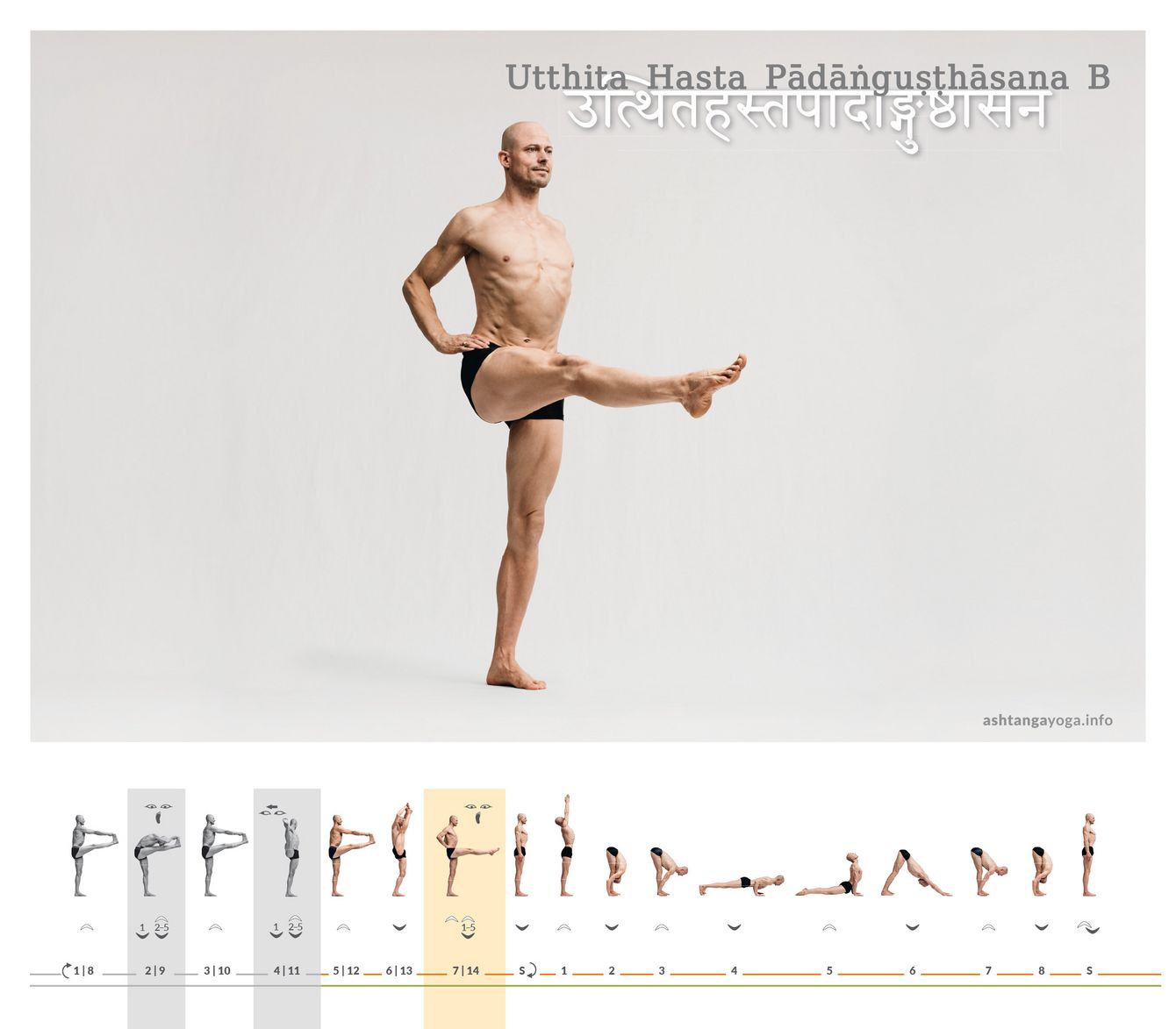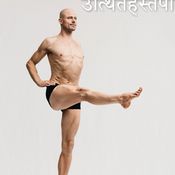

The flow of movements continues directly from the previous posture (greyed out, description on previous page).
Vinyāsa 5 – Inhale:
Bring your right leg forward again. Your right arms stays long, the left hand on your hip.
Vinyāsa 6 – Exhale:
Exhale bringing both hands to either side of the right foot and pull the leg to your torso, which is still upright.
Vinyāsa 7 – Inhale, Exhale, 5 breaths:
Inhale and then exhale your hands to your his. Hold your leg upright in this position with a neutral spine and using the deep core muscles. Stay here until the fifth exhale.
Try this: The posture is most interesting when you keep the torso upright. Bring your pelvis back a bit and deepen the groin into a slight internal rotation. In this way the spine can maintain it's natural shape and you can grow upwards.
Vinyāsa 8 to 14:
At the end of the fifth exhalation, lower the leg down. Then repeat the entire flow of movement (Vinyāsa 1 to 7) on the left side.
Traditionally, you can go directly to the next pose following this one. In thie AYI Method, we include a Vinyāsa here, so that you stay warm and it helps to keep the rhythm of the movements.
Vinyāsa 1 to 9 and Samasthitiḥ:
Follow the flow of movements as you know them through a complete Vinyāsa.
Once back in standing, continue to the next posture.
Effect: Utthita Hasta Pādāṅguṣṭhāsana B, the "Continuation of the standing pose with the big toe to hand“, adds a strength exercise for the hip flexors and offers you an opportunity to develop tension. This pose is much more challenging than it seems at first glance.


 Dr. Ronald Steiner
Dr. Ronald Steiner
 Richard Pilnick
Richard Pilnick

Messages and ratings